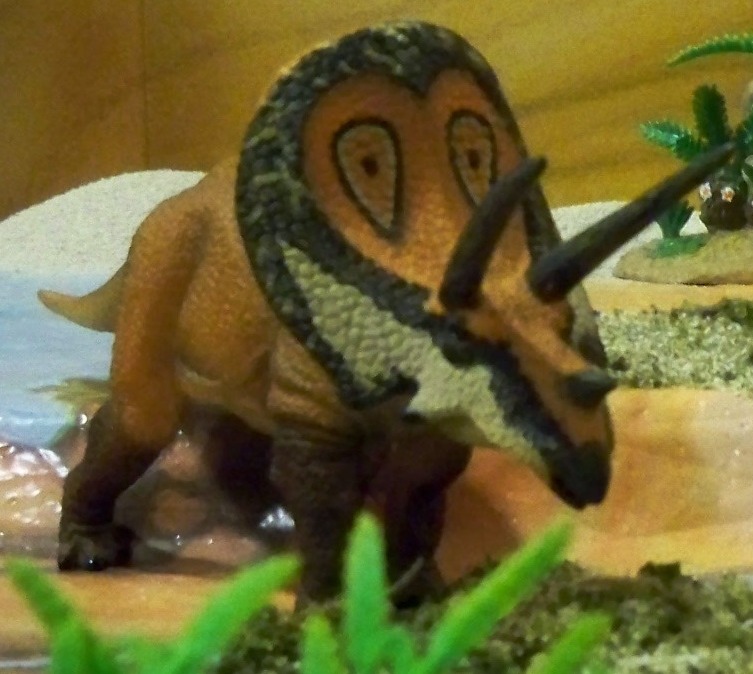LATE
CRETACEOUS
HELL CREEK FORMATION
Ceratopsians
update 112014
The Hell Creek coastal lowlands had other ceratopsians relatives of Triceratops and smaller more primitive neoceratopsians. Torosaurus is the other Ceratopsians. It is less common than Triceratops with the largest skull of any animal that lived on land.
mouse over diorama pics for figure information.

The name means protuberance lizard not bull lizard as often claimed. Typically when you have two closely related animals they partition the resources or live in different environments. This doesn't seem to be the case as there is no pattern in the fossils finds.

Torosaurus may represented the mature form of Triceratops, with the bones of typical Triceratops specimens still immature and showing signs of a first development of the Torosaurus’ distinct frill holes. During maturation, the skull frill would have been greatly lengthened and holes would have appeared in it. Some possible transitional forms have been found. Torosaurus fossils appear to be older individuals and no sub adult fossils have been identified. Ceratopsians that are not sexually mature are very difficult to differentiate from close relatives. Even if Triceratops is a separate form the fossils may be too similar to immature Torosaurus to identify.
It may not have nearly as rare as we think. The frill is very thin and fragile and complete skulls are rare, odds are many partial skulls attributed to Triceratops are actually Torosaurus.
Leptoceratops resembled, and were closely related to, other neoceratopsians, such as the families Protoceratopsidae and Ceratopsidae, but they are more primitive and generally smaller. Leptoceratopsids have so far been found exclusively in the Late Cretaceous period of Asia and Western North America.

Leptoceratops at about 6 feet long was one of the last and most primitive of
the protoceratopsids. This is a primitive dinosaur and probably much like the
ancestors of Triceratops.
Previous Triceratops next pachycephlasaurs





